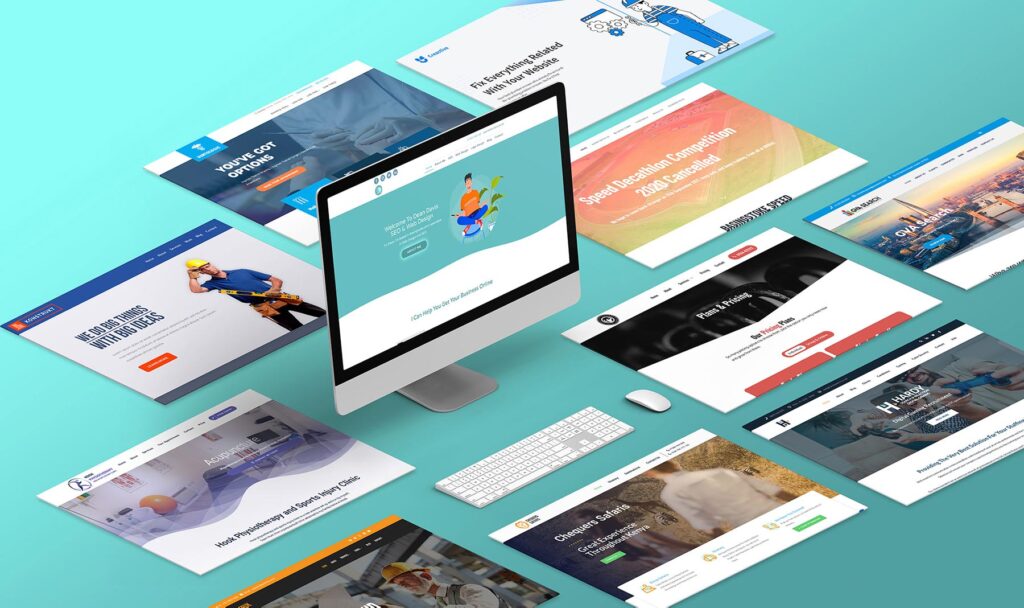Website’s Can Not be all Images- importance of adding text to your website
Website’s Can Not be all Images. On the web, we use images everywhere! Images (such as maps, graphs, info graphics) can be an effective way to communicate information. But what happens when we use images of text instead of actual text? This is a design and development practice that’s been around a long time, but usually affects web accessibility negatively.
What is wrong with using images as text on a website?
Using an image instead of actual text is bad for search engine optimization (SEO), because search engines cannot read text inside an image. If someone searches for text that appears in the image, your website will never appear in the search results.
Why is content so important?
Great content is an important asset. It has the ability to create positive experiences for your potential customers and compel them to come back for more. It’s your ticket to capturing your audience’s attention and continually reinforcing a positive brand impression.
Accessibility best practices
- Use genuine text where possible.
- Use CSS to style and format text instead of making it an image.
- Use the alt text attribute to replicate the text inside the image so the reader can get the full message from images of text.
Capturing readers’ interests with good website content can be really challenging. Most visitors will spend just a few seconds on a web page before deciding what to do next. Good website writing is the key to beating these odds. Well-written content that’s optimized for the web rises to the top of search results and holds readers’ attention.
The “Inverted Pyramid”
The inverted pyramid is a principle borrowed from journalism for effective content writing. It helps readers gain the most important knowledge right under the headline. It presents the most vital points that readers must know at the beginning of the article. Web readers have short attention spans—they’ll decide whether your site has the information they need in seconds. Structure your content like an upside-down pyramid or cone. The most important messages go at the top of the page. Then, gradually drill down to the more specific, supporting information.
Write short, simple sentences
The short attention span of today’s reader demands sentences of 35 words or fewer. So, website content that’s accessible and easy to read will naturally reach a wider audience. Focus on using nouns and verbs. Use adverbs and adjectives sparingly. Don’t use words like “equanimity” or “obfuscate” when words like “calm” or “confuse” will do.
Different places on your website that you can add text
First it is good to start by adding page titles and descriptions. Each title should be no longer than 50-60 characters, or they will be cut off in the search engine results page. Descriptions should be kept under 120 characters for the same reason. This text is important because it is the only thing people will be able to see about your websites when they type in a relevant search and your site comes up in the results. Make it informative and compelling. Make sure it is grammatically correct and that there are no errors.
Text is not only important on just your homepage. The text should flow through every page in your website. Remember the longer you can keep attention on your website the better it is for your seo and page rankings.
This means that you should be adding your keywords, phrases, and relevant words through actual details and descriptions, as well as a call to action for your page visitors. Google is all about user experience, so tailor your content to the actual human interaction you will have on your site, not the bots that will crawl it.
Tips for Creating Good Website Content
Identify Your Target Audience & Develop Buyer Personas
Before creating the content, make sure you really understand your target audience, their needs, and their language. Creating a buyer persona is a great way to start the process.
Set Content Goals
What purpose should your content serve? Do you want to use it to position your company as an expert in your field, sell products, educate your visitors, establish a relationship and connection with visitors? Which relevant keywords and keyword phrases will drive the most traffic to your site? What tone do you want your content to have (educational, humorous, 1st person, 3rd person, etc.) Starting with the end in mind will ensure your content is focused on driving the right outcomes.
Be Clear & Concise
Write the content in an active voice. Use strong verbs and simple sentence construction. Get to the point quickly. Long, drawn out copy will turn visitors away.
Don’t Forget the SEO
To drive quality traffic to your website, make sure to employ good SEO practices in each of your web page’s content. These practices include focusing on one keyword phrase per page (if possible), including the keyword phrase in the title, headings, page’s URL, throughout the content, in the meta tags (title & description), image file names and alt tags, and hyperlinks.
Faceless Marketing
Here at Faceless Marketing, we develop engaging websites that speak clearly and directly to your target audience. Our compelling designs showcase your brand personality and key attributes. We build or improve business websites, so they are easy to use, both internally and client-facing. You save time managing your site and take potential customers from interested to engaged.
If your website looks unappealing or outdated, your audience will immediately have a negative impression of your business. They will not find your website appealing, which deters them from your page. You will miss out on leads because they will leave your page for a competitor’s page. Marketing moves fast, but so do we. Our marketing experts have worked with many businesses – large and small to develop their customer base and number of subscribers. Reach out to Faceless Marketing for a quote or FREE consultation. Call 1-800-357-1299 or email info@faceless.marketing and check out our YouTube channel for helpful videos.











